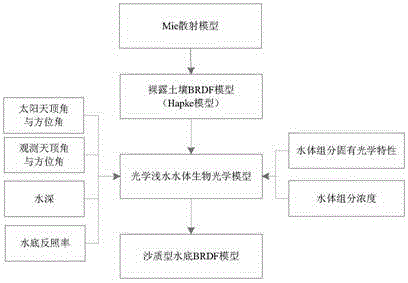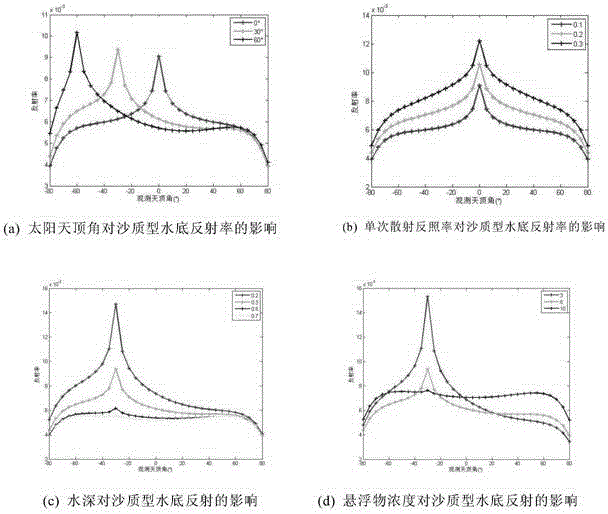Sandy water bottom BRDF (Bidirectional Reflectance Distribution Function) model based on Hapke model
A model, sandy technology, applied in the field of optical remote sensing, which can solve the problems of wind and waves, the error of the incident light conditions of the hull and equipment, and the difficulty of in-situ measurement at sea.
- Summary
- Abstract
- Description
- Claims
- Application Information
AI Technical Summary
Problems solved by technology
Method used
Image
Examples
Embodiment Construction
[0060] In order to better illustrate a kind of sandy type underwater BRDF model based on the Hapke model that the present invention relates to, utilize the model of the present invention to carry out test and analysis, obtain good effect, concrete implementation method is as follows:
[0061] (1) Calculate the single-scattering albedo and the asymmetry factor of the scattering phase function of soil particles based on the Mie scattering model;
[0062] (2) Input the single-scattering albedo and the asymmetry factor of the scattering phase function obtained by Mie scattering into the Hapke model by setting the width and height of the hot spot, and calculate the two-way reflectance data of the bare soil;
[0063] (3) Given the concentration of water body components (chlorophyll a, inorganic suspended matter, yellow matter), water body depth, water bottom albedo and solar incident zenith angle, construct an optical shallow water bio-optical model;
[0064] (4) The output of the H...
PUM
 Login to View More
Login to View More Abstract
Description
Claims
Application Information
 Login to View More
Login to View More - R&D
- Intellectual Property
- Life Sciences
- Materials
- Tech Scout
- Unparalleled Data Quality
- Higher Quality Content
- 60% Fewer Hallucinations
Browse by: Latest US Patents, China's latest patents, Technical Efficacy Thesaurus, Application Domain, Technology Topic, Popular Technical Reports.
© 2025 PatSnap. All rights reserved.Legal|Privacy policy|Modern Slavery Act Transparency Statement|Sitemap|About US| Contact US: help@patsnap.com



